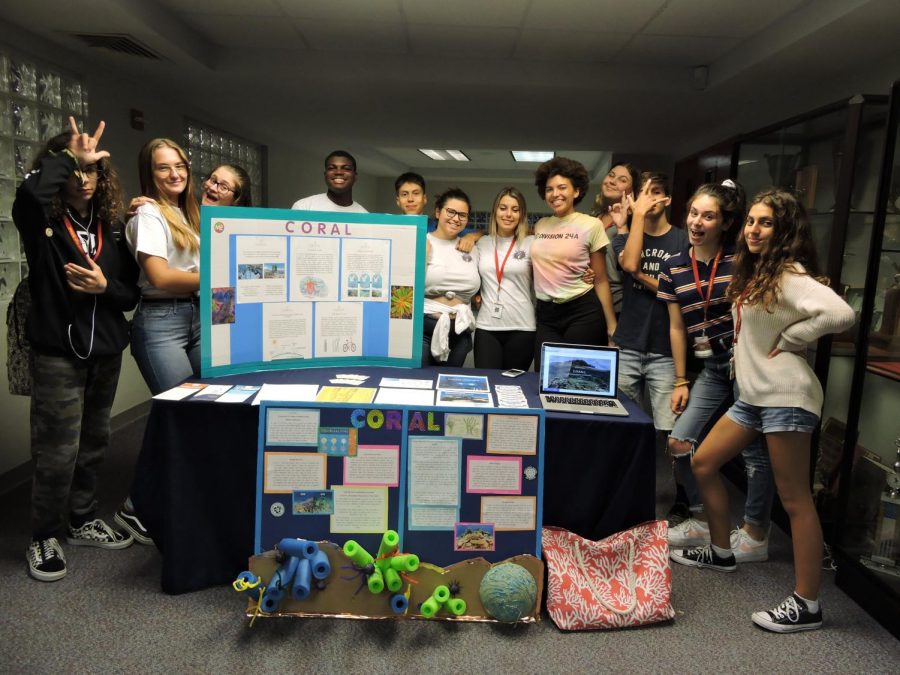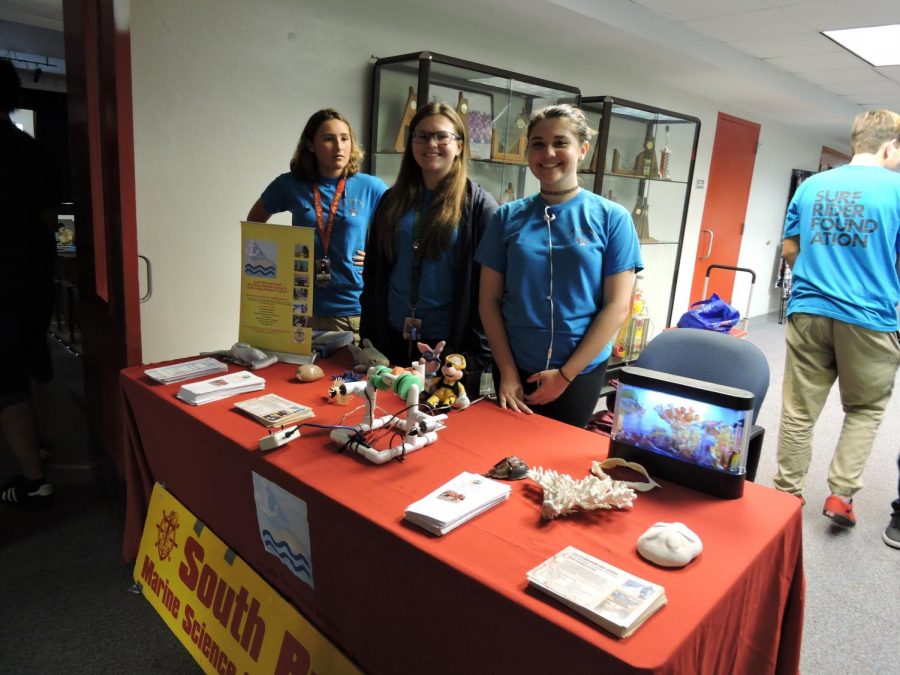SBHS Hosts Experts on Red Tide
University of Miami professor explains the Red Tide phenomenon, while local activist urges immediate action.
Coral Club represents their club and explains how coral is important to our ecosystems. In a photo, members of the club goof off together.
December 4, 2018
Cyanobacteria. Most people don’t know what it means. But, in Florida that could quickly change. It’s the reason thousands of fish, hundreds of sea turtles and even a 26-foot whale shark washed up dead on the west coast of Florida this summer. It’s also the reason SBHS students, teachers and local residents gathered on November 5th in the SBHS auditorium to listen to two experts in the fight against climate change.
University of Miami Professor Larry Brand, a specialist in ecology and phytoplankton, and Catherine Uden South Florida Campaign Organizer for Oceana, an international organization dedicated to protecting the world’s oceans, spoke for three hours about the effects of the red tide in South Florida.
A bloom of cyanobacteria has been occurring in Florida Bay since the 1980’s, with no threat to the environment – until now. Dinoflagellates, an algae that causes the red tide, has occurred naturally for hundreds of years, but has increased dramatically, from 2.5 million dinoflagellates per liter fifty years ago to 34.7 million dinoflagellates today. That’s a 92% increase.
With approximately 2.5 million residents living near Biscayne Bay, this bloom could affect not only the environment, but their health.
“People should not swim in the water, eat seafood from it, or breathe the air near it,” said Brand, referring to the 90 percent increase in respiratory distress and other diseases.
Not only does the red tide kill marine life, but at times when its presence has increased, so have ER visits of people who ate infected seafood. The seafood is infected with the toxin microcystin from the algae and is known for leaving humans with a short-term gastrointestinal disorder. As well, people in red-tide-affected areas can be eating infected seafood without knowing it. Large amounts of these dinoflagellates is easily spotted, but a small amount of the algae usually goes unnoticed, since it’s still safe for the ecosystems to survive.
Since 1980, ocean waters have started to become cloudy and sea grass has started to die off because of the increasing amounts of algae. According to Uden, minerals being drained into the bay cause of the dramatic increase of the algae break-out. This excess nitrogen comes from runoff from sugar cane farms in Central Florida, while the phosphorus comes from natural phosphate deposits in the west side of the bay. Samples of the water from Tampa Bay taken from Brand’s experiments concluded that there is an excessive amount, a 200 to 1 ratio, of nitrogen (runoff) to phosphorus. Plants need both to survive, but once nitrogen is drained into the bay, the algae is able to reproduce quickly. After plants use up the phosphorus in feeding, as they naturally need more of this nutrient than nitrogen. Nitrogen is then drained into the bay, and the bacteria is able to grow rapidly.
In order for the runoff to be reduced, it is necessary for there to be mandatory laws for companies to actually make a change to stop draining chemicals. Uden’s organization, Oceana, has set out to fix this. By meeting with clubs, activists and coalition partners, her organization has focused on strategizing what to do about minimizing the effects of red tide
By 2030, Florida wants to double its population, but a safe environment for residents won’t be possible if the red tide problem isn’t fixed.
“It’s where the world is headed” said Uden, “[now] Hollywood is really up to speed with the rest of the world.”




